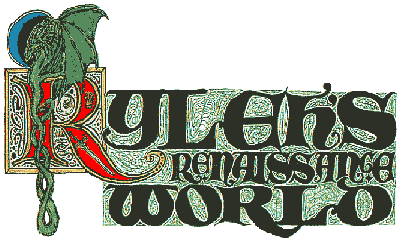|
|
|

Shortly before the Civil War, a new name for the people of Dixie was launched by fans of Sir Walter Scott's "Ivanhoe" -- The Chivalry. The name sums up a favorite myth of southerners to the effect that their eraliest colonial ancestors had been royalist Cavaliers and that the South thus represented the blueblood or "chivalry" of the land. This belief was accompanied by the cult of aristocratic manners. Visiting Richmond in 1853, the Connecticut-born Frank Olmsted found "more ceremony and form than well-bred people commonly use at the North." The same observation has been made countless times since.
Southern gentlemen, jealous of their honor, were quick to quarrel. What had, at a less refined stage in the progress of southern manners, been known as a difficulty (a shoot-out or a knife fight) was now invested by the "code duello" with chivalric decorum. Other aspects of the chivalric mystique were the cults of white southern womanhood, ancestry and genealogy (Robert E. Lee devoted many youthful hours to the latter), horses, hunting and racing, military affairs, firearms, hospitality, and oratory -- every one of which flourishes in Dixie to this day.

A chivalric event par excellence was the ring tournament. Here is a description of one that took place in South Carolina during the decade preceding the war, written by a plantation Society matron named Emily Sinkler who was present with the youthful Lizzie:
For Ryleh, what was most startling--even eerie!--about this article was the accompanying illustration, above, which appeared as an engraving in an Antebellum Southern newspaper sometime in the 1850's. By way of background: it seems that Dan Flood, President of the American Crossbow Association headquartered in Huntsville, Arkansas and organizer of the recent Withrow Faire revival there, had obtained some old home movie footage of the first Withrow Faire back in 1953. He subsequently had that movie footage rerecorded on videotape and distributed as part of the publicity campaign surrounding the Withrow Faire's grand reopening.
Ryleh reviewed that tape several months ago--but before finding and reading the above article.
What made this illustration so eerie was the sense of familiarity that overwhelmed Ryleh when he first saw it. True, there were some differences--the framework holding the ring was built in the form of an overhanging gallows, for instance--but the old 1953 movie footage had captured the exact same action: a horseman with lance couched, bearing down on a metal ring with the object of catching it and carrying it away on the point of his lance!
Unlike the 1850's knight, however, the 1950's lanceman did not attempt to wear "period" costume. He was, in fact, garbed in cowboy hat, neckerchief, workshirt, jeans and cowboy boots--which tickled Ryleh's sense of "funny" something fiercely. But this made the similarity between the centuries all the more startling: it was the exact same kind of "Feats of Arms" we are all so familiar with at Faire!
Aye, today the jousts and the lists are now surrounded by more contemporary amusements. "Gander pulling" is no longer acceptable, for instance, but minstrels, jesters, players, food vendors and craft merchants have gladly taken its place. In a hundred years, it would seem, Fairegoers have become a tad more sophisticated and so the entertainments accompanying the tournaments have also changed to suit today's tastes. This was to be expected.
But the main point remains: we can no longer debate which current Faire was the FIRST real Renaissance Faire. Instead, we now have to decide which was the first real REVIVAL of the RenFaire Tradition in this century! Ryleh's money still rests with the Withrow Faire of Huntsville, Arkansas: he's viewed the old movie footage, seen the old book [with photographs] published by the late founder of the first Withrow Faire and read the newsclippings yellowed with age.
All those would still make the Withrow Renaissance Faire the very first Twentieth Century Revival of an old Southern Tradition. As for the Preacher: there indeed may be nothing new under the sun, Aye, but the folks of Huntsville, Arkansas can still be very proud of their Faire. HUZZAH for the Withrow Faire!
Standard Disclaimer: This webpage is strictly an *Unofficial* look at the Withrow Renaissance Festival held near Huntsville, Arkansas in October, 1998. The author of these pages is in no way, shape, manner or form connected with the Withrow Renaissance Festival, the American Crossbow Association, the Society for Creative Anachronisms, the Huntsville Chamber of Commerce and/or any of the sponsors associated with this event. The article quoted above, "Southern Chivalry", was excerpted from the Reader's Digest volume, "American Folklore and Legend", copyright ©1978 by the Reader's Digest Association, Inc., Pleasantville, NY/Montreal, Canada. It appears here solely for purposes of information and entertainment. All opinions expressed are strictly this author's own. Unless noted otherwise, all photographs are copyright ©1998,1999 by George Laking.